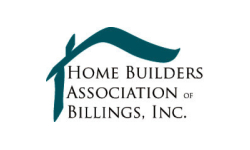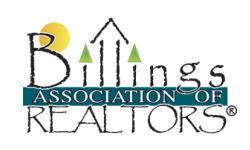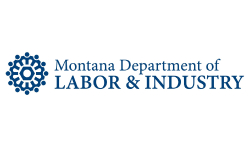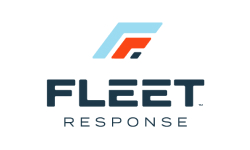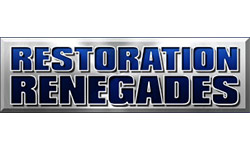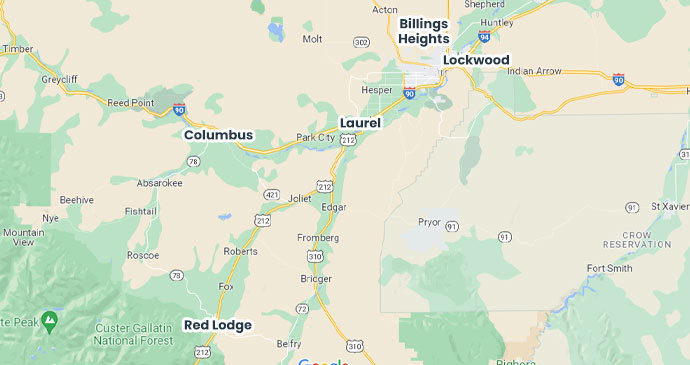Winter Property Maintenance Tips
Anyone who has ever had to take care of a property in winter knows that it can be difficult. When you live in South Central Montana, you likely already have experience with the challenges of cold weather, intense freeze and thaw, snow removal, and other weather maintenance tasks.
You might find yourself hoping for a mild winter to save yourself time, money, and effort. But unfortunately, even though a mild winter can seem like a blessing, it can actually create some additional problems.
What Is a “mild Winter,” Anyway?

Mild winter” is a relative term. In South Central Montana, we understand that mild winters are winters that include more warm days than the average winter and less snowfall. Snowfall varies greatly in Montana, with some mountainous areas getting 300 inches of snow a year, whereas prairie towns get more like 30 to 50 inches each year.
A mild winter might mean less snow removal, or it might mean that more people can get outside for winter recreation when it’s not so bitterly cold.
However, homeowners experience some big challenges during mild winters because of the frequency of the freeze-and-thaw cycle.
Those warmer days that break up the long, cold winter days can definitely cause problems for homeowners, property managers, and commercial business owners who need to maintain their properties.
What Problems Are Caused by Increased Freeze-and-thaw Cycles?
The biggest issue that you are likely to encounter because of an increased number of freeze-and-thaw cycles is water damage.
However, the water damage can be caused by several different things!
Ice Dams
An ice dam forms at the edge of a roof, and it prevents melting snow from properly draining off the roof. When the water can’t follow the correct path of escape, that water can back up behind the dam.
This water is likely to leak into the home, causing damage to interior spaces, walls, ceilings, and insulation.
The best way to deal with ice dams is to prevent them. You can do this by repairing any attic air leaks, checking your insulation, install soffit vents, and applying ice dam prevention products.
If you have damage from an ice dam, you can contact disaster restoration professionals to help with the cleanup.
Indoor Flooding from Melting Ice & Snow
Some flooding isn’t caused by roofing issues but by ice and snow on the ground. In a number of situations, melting snow and ice can come into the building through doors, basement windows, plumbing, and unsealed cracks.
These situations include:
- Blocked or frozen drainage pipes
- Snow that has been shoveled or blown against the building or home
- Improperly installed downspouts
- A malfunctioning sump pump
A risk factor for this kind of damage is living close to a body of water, such as a lake, river, or pond.
To prevent indoor flooding, be sure to:
- Check your sump pump regularly to ensure that it is functioning correctly.
- Consistently take care of snow removal and make sure that the snow is at least 5 feet away from the property.
- Inspect your home’s exterior drainage and downspouts.
Materials Damage
Some building materials do better with freeze-and-thaw conditions than others. “Freeze-thaw durability,” sometimes called “freeze-thaw resistance,” is used to measure how much something can withstand.
It’s a given that qualified builders in the Billings and Laurel areas should be using materials that have high freeze-thaw durability when they complete new construction or renovations. However, mild winters can put stress on even the strongest building materials.
Some common materials that are affected by freeze-thaw include:
- Concrete
- Plumbing
- Some vinyl siding
- Commercial roofing
To protect your home from the freeze-thaw cycle, be sure to:
- Disconnect your hoses and watch for any issues with freezing exterior pipes.
- Make sure that any cracks in your driveway, sidewalk, and siding are addressed before the freeze-thaw cycle.
- Clean your gutters to keep melting water moving efficiently.
What if Something Goes Wrong?
If you find yourself dealing with the unpleasant aftermath of flooding due to a mild winter, you might not want to try the DIY route. Even though you may want to try to repair things yourself, you won’t have access to the kinds of tools, equipment, supplies, and knowledge that expert restoration contractors bring to the job.
If you are in need of help with water damage in your home, rental properties, or commercial spaces, the expert team at Alpha-Omega Disaster Restoration is just a phone call away!



